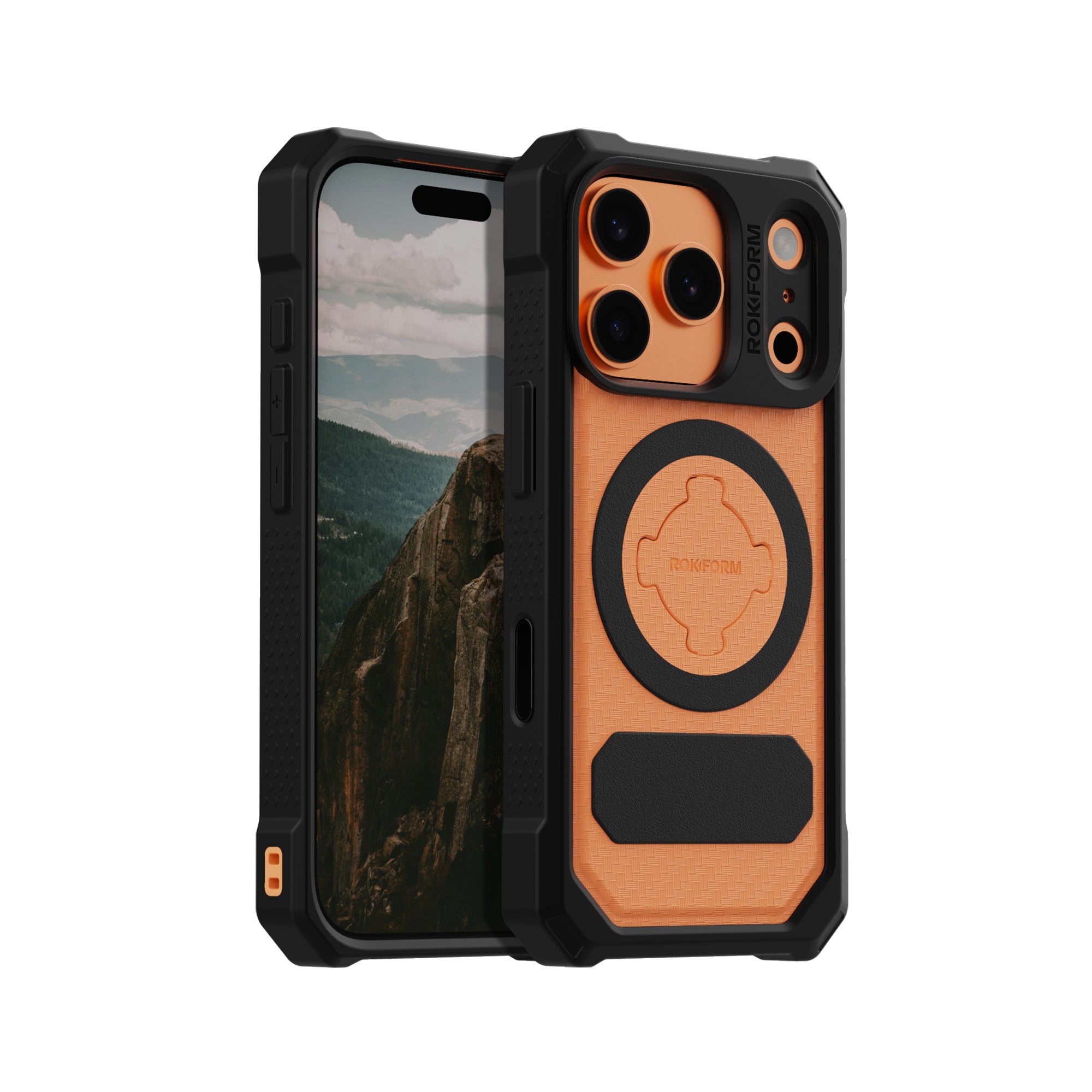Look, Samsung makes a lot of phones. Like, a lot. They've got nearly 22% of the global market, which makes sense when you see how many different models they put out each year. From flips and foldables, to budget-friendly and top-of-the-line, there's a Samsung phone for every taste, style and price point. I was helping my friend Sarah pick one last year and honestly? We were both overwhelmed. She must have spent three weeks going back and forth between different Galaxy models before settling on the S24 FE – which, by the way, turned out to be perfect for her photography hobby and didn't completely destroy her budget.

Here's the thing about choosing a Samsung phone in 2025 – it's not really about getting the newest, shiniest model. With prices ranging from around $200 for decent budget options to over $2,100 for those wild foldable phones, figuring out what you actually need becomes way more important than just grabbing whatever's newest. Maybe you're creating content and need that crazy 200MP camera, or you're in business and actually use the S Pen, or honestly, you just want something reliable for calls and texts without spending a fortune.
The whole "which samsung phone should i get" question gets a lot easier when you stop overthinking it and focus on what you'll actually use. This guide breaks down 25 solid Samsung phones across different categories, so you can skip the analysis paralysis and find something that actually makes sense for your life and wallet. We'll talk about real-world performance, how these phones handle different situations, and hopefully help you find your next Samsung without losing your mind in the process.
Table of Contents
Skip to the Good Stuff: My Quick Picks
-
Figure Out What You Actually Need First
Budget Range Considerations
Primary Use Case Alignment
Display Preferences That Matter
Camera Requirements Assessment
Performance and Future-Proofing Needs
Battery Life and Charging Priorities
-
Budget-Friendly Champions (Under $400)
Galaxy A15 5G
Galaxy A25 5G
Galaxy A35 5G
Galaxy A54 5G (Previous Gen)
-
Mid-Range Powerhouses ($400-700)
Galaxy A55 5G
Galaxy S23 FE (Fan Edition)
Galaxy S24 FE
Galaxy Z Flip5 (Previous Gen)
-
Flagship Performance Leaders ($700-1000)
Galaxy S24
Galaxy S24+
Galaxy S23 (Previous Gen)
Galaxy S23+ (Previous Gen)
-
Ultra-Premium Powerhouses ($1000+)
Galaxy S24 Ultra
Galaxy Z Fold6
Galaxy Z Flip6
Galaxy S23 Ultra (Previous Gen)
-
Specialized Use Case Champions
Galaxy XCover7
Galaxy Tab S9 (Phone Mode)
Galaxy A73 5G (Regional)
Galaxy M54 5G (Regional)
-
Future-Forward 2025 Choices
Galaxy S25 (Anticipated)
Galaxy S25+ (Anticipated)
Galaxy S25 Ultra (Anticipated)
Galaxy Z Fold7 (Anticipated)
Galaxy Z Flip7 (Anticipated)
Performance Deep Dive: How Each Phone Handles Real-World Scenarios
Protecting Your Samsung Investment
Final Thoughts
Skip to the Good Stuff: My Quick Picks
Pretty solid choice overall: Galaxy A35 5G gives you flagship-level features for $350-400 with that nice AMOLED screen and stabilized camera
If you're into photography: Galaxy S24 Ultra is kind of ridiculous with its 200MP camera setup and S Pen, though you'll pay for it
Budget pick that won't disappoint: Galaxy A15 5G covers all the basics for around $200-250
For productivity nerds: Galaxy Z Fold6 basically turns into a tablet when you need it, but yeah, it's expensive
Style points: Galaxy Z Flip6 looks cool and performs well, perfect if you want something different
Sweet spot for most people: Galaxy S24 FE gets you flagship cameras and AI stuff for $650-700
Compact but powerful: Galaxy S24 packs premium features into a phone you can actually use one-handed
Built like a tank: Galaxy XCover7 handles whatever you throw at it, literally
Wait for the new stuff: Galaxy S25 series might be worth holding out for if you want the latest new samsung phone features
Last year's flagship: Galaxy S23 series gives you proven performance for less money
Figure Out What You Actually Need First
Before we dive into specific phones, let's be honest about something – most people overthink this decision. Your budget immediately narrows things down from basic $200 phones to those crazy expensive $2,100+ foldables, and what you actually do with your phone tells you whether you need all the bells and whistles or just something that works reliably.
Price Range |
Samsung Options |
What You Get |
Who Should Consider |
|---|---|---|---|
Under $400 |
Galaxy A15 5G, A25 5G, A35 5G |
Nice screens, decent cameras, all-day battery |
Students, first phone, backup device |
$400-700 |
Galaxy A55 5G, S23 FE, S24 FE |
Smooth 120Hz screens, good cameras, solid performance |
Most people honestly |
$700-1000 |
Galaxy S24, S24+, S23 series |
Fast processors, premium build, AI features |
Power users, camera enthusiasts |
$1000+ |
S24 Ultra, Z Fold6, Z Flip6 |
200MP cameras, S Pen, foldable screens, everything |
Professionals, early adopters, show-offs |
Budget Range Considerations
Your spending limit is probably the biggest filter here, which makes sense. Samsung's entry-level phones start around $200 and honestly, they're not bad for basic smartphone stuff anymore.
The mid-range sweet spot ($400-700) is where most people should probably look – you get a lot of the premium features without the crazy pricing. Flagship territory ($700-1000) brings the latest processors, really good cameras, and premium materials that feel nice but cost more.

The ultra-premium stuff ($1000+) includes phones like the S24 Ultra with its wild 200MP camera and S Pen, plus those foldable phones that are pretty cool but definitely not necessary for most people. Don't sleep on last year's flagships though – the Galaxy S23 series performs great and costs way less now that the S24 is out.
Primary Use Case Alignment
If you're using your phone for work, you might actually benefit from features like the S Pen or the Z Fold6's big screen for presentations and multitasking. Most people think they need these features but honestly don't.
Here's what happened with my friend Maria: She's in marketing and convinced herself she needed the S24 Ultra for "professional photography." Six months later, she admits she mostly uses it for Instagram stories and could've saved $400 with the S24 FE. The AI photo features do make her product shots look better automatically though, so there's that.
Content creators should probably focus on camera quality and processing power. Samsung's newer phones have gotten really good at making photos and videos look good without much effort. Gamers need fast processors and smooth screens – flagship models handle this well, but you're probably fine with mid-range options unless you're really serious about mobile gaming.
If you just need calls, texts, and social media, save your money and get something from the Galaxy A series. They handle basic stuff perfectly fine.
Display Preferences That Matter
Samsung's screens are generally pretty good across their lineup. The AMOLED displays in mid-range and flagship phones look great – colors pop, blacks are actually black, and they're bright enough to see outside.
Screen size is more about personal preference. The 6.1" Galaxy S24 is nice if you want something manageable, while the 6.8" S24 Ultra is great for watching videos but might be too big for some people's hands. Those foldable screens are cool but honestly, most people don't need them.
The 120Hz refresh rate makes scrolling feel smooth, and once you get used to it, regular 60Hz screens feel a bit choppy. Most mid-range and flagship Samsung phones have this now.
Camera Requirements Assessment
For casual photos and social media, the 50MP cameras in most Samsung phones are more than good enough. The AI stuff automatically makes your photos look better, which is nice because who has time to manually adjust settings?
If you're really into photography, the Galaxy S24 Ultra's 200MP camera captures insane detail, and you can crop photos way more than usual without them looking terrible. The multiple zoom levels are pretty useful too, though I think most people overestimate how much they'll use them.
Video recording has gotten really good on Samsung phones. The stabilization helps a lot if you're walking around while filming, and the AI cleans up background noise in videos, which is actually pretty impressive.
Low-light photos vary a lot depending on which phone you get. Flagship models do much better in dark restaurants or at night, while budget phones can struggle when the lighting isn't great.
Performance and Future-Proofing Needs
The latest Snapdragon processors in 2024 flagship models are honestly overkill for most people, but they do ensure your phone will stay fast for years. If you keep phones for 3-4 years, it might be worth spending more upfront for better performance longevity.
Samsung's Exynos processors in some models are decent but not quite as good as Snapdragon, especially for gaming. Which one you get sometimes depends on where you live, which is kind of annoying.
RAM matters if you're constantly switching between apps. 6-8GB is fine for most people, but power users who have tons of apps open might want more. Storage is harder to predict – photos and videos take up way more space than you think they will, so consider going bigger than you think you need.
Battery Life and Charging Priorities
Most Samsung phones have 5,000mAh batteries now, which generally gets you through a full day. Bigger screens and faster processors use more battery, but Samsung's gotten better at optimizing things.
Fast charging speeds vary quite a bit. Budget phones charge slower, which is fine if you mostly charge overnight. Wireless charging is convenient if you have a charging pad, but it's not essential.
The AI battery optimization actually works pretty well – it learns how you use your phone and manages background apps to save power. Still, if you're a really heavy user, consider getting a phone with a bigger battery or just accept that you'll need to charge more often.
Budget-Friendly Champions (Under $400)
Samsung's budget phones have gotten surprisingly good over the past few years. These four models prove you don't need to spend a fortune to get a decent smartphone experience, though you'll definitely notice some compromises compared to pricier options. Still, for basic smartphone stuff, they're pretty solid choices.
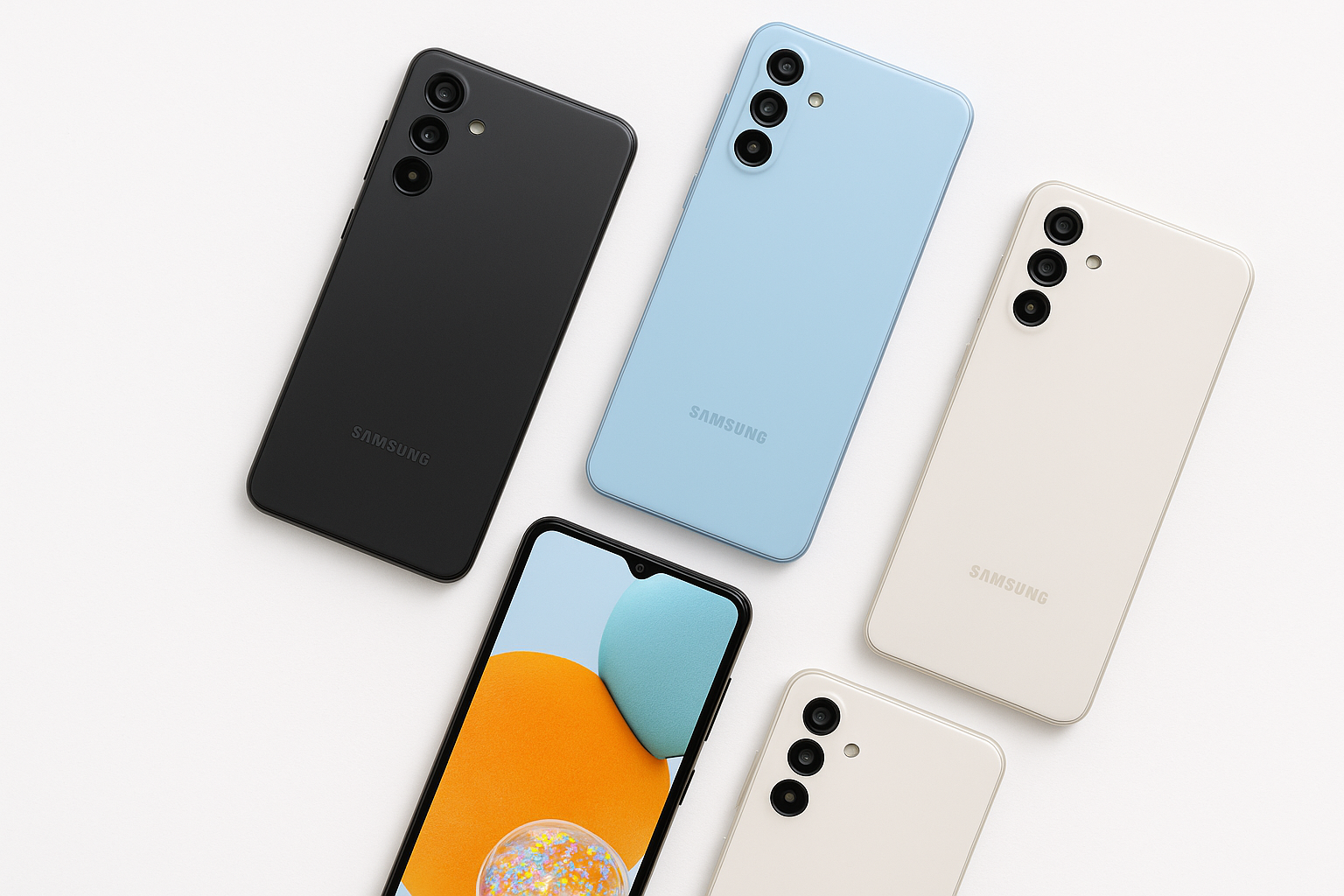
1. Samsung Galaxy A15 5G
Price Range: $200-250
Best For: First smartphone, seniors, backup phone
The Galaxy A15 5G is Samsung's entry-level option that still manages to feel like a real smartphone. The 6.5" screen is big enough for most tasks, and the 50MP camera takes decent photos for social media, though don't expect miracles in low light.
Battery life is actually really good – the 5,000mAh battery easily gets you through a day of normal use. Build quality is fine for the price, though it definitely feels more plastic-y than expensive phones.
Real-world take: This is perfect if you're buying a first phone for a teenager or helping elderly parents upgrade from a flip phone. The interface is straightforward, and it handles basic stuff like calling, texting, and Facebook without any issues. Just don't expect it to run demanding games smoothly or take amazing photos in restaurants.
2. Samsung Galaxy A25 5G
Price Range: $300-350
Best For: Step up from basic without breaking the bank
The Galaxy A25 5G gets you Samsung's nice AMOLED screen technology, which makes a bigger difference than you might expect. Colors look more vibrant, and the screen is easier to see in bright sunlight compared to cheaper LCD displays.
The camera is noticeably better than the A15, with more consistent results and better processing. It's still not flagship quality, but for everyday photos, it does the job well enough.
Real-world take: Good middle ground if you want something that feels more premium than the A15 but can't justify spending $400+. The screen upgrade alone makes it feel like a much nicer phone. Performance is solid for typical smartphone tasks, though it might slow down if you're trying to do too many things at once.
3. Samsung Galaxy A35 5G
Price Range: $350-400
Best For: Best budget option if you can stretch the budget
The Galaxy A35 5G is probably the best value in Samsung's entire lineup. You get that smooth 120Hz screen that makes everything feel more responsive, plus optical image stabilization in the camera, which is pretty rare at this price.
The build quality feels more premium, and performance is noticeably better than the cheaper A series phones. It's getting close to mid-range territory while still being technically a budget phone.
Real-world take: If you can swing the extra $100-150 over the A15, this is absolutely worth it. The smoother screen and better camera make it feel like a much more expensive phone.
I've recommended this to several people who wanted something good but not crazy expensive, and nobody's complained. Battery life is excellent, and it should stay usable for several years.
4. Samsung Galaxy A54 5G (Previous Gen)
Price Range: $300-350 (discounted)
Best For: Last year's mid-range at budget prices
The Galaxy A54 5G benefits from being last year's model – all the bugs have been worked out, and the price has dropped significantly. The 6.4" AMOLED screen looks great, and the camera system is more versatile than current budget options.
Since it's been out for a while, performance is well-optimized, and you're getting mature software that's had time to be refined.
Real-world take: Smart choice if you don't mind having last year's technology. You're essentially getting what was a $450 phone for $300, which is pretty good value. The camera and performance are definitely better than current budget models, and Samsung will keep updating it for a few more years.
Mid-Range Powerhouses ($400-700)
This is honestly where most people should be looking. Samsung's mid-range phones have gotten really good at giving you most of the flagship experience without the flagship price. You get nice screens, decent cameras, and performance that handles pretty much everything you'll throw at it.
5. Samsung Galaxy A55 5G
Price Range: $450-500
Best For: Balanced performance without overspending
The Galaxy A55 5G feels like a flagship phone in a lot of ways. The 6.6" AMOLED screen with 120Hz refresh rate is smooth and vibrant, and the build quality is genuinely impressive for the price.
Performance is solid for most tasks – social media, streaming, casual gaming all work well. The 50MP camera produces consistently good results, especially with Samsung's AI enhancements helping out automatically.
Real-world take: This hits the sweet spot for a lot of people. It feels premium, performs well, and doesn't cost a fortune. The battery easily lasts all day, and the camera is good enough for Instagram and family photos. Unless you need specific flagship features, this covers most bases really well.
6. Samsung Galaxy S23 FE (Fan Edition)
Price Range: $600-650
Best For: Flagship experience at mid-range price
The Galaxy S23 FE is basically Samsung's way of giving you flagship features without the flagship price. The screen quality matches their premium phones, and the Snapdragon 8 Gen 1 processor is genuinely fast – no compromises on performance here.
The camera system is where this really shines. You're getting flagship-quality photos that rival much more expensive phones, with excellent low-light performance and versatile zoom options.
Real-world scenario: My friend Jake wanted flagship camera quality but couldn't justify spending $1,000+. The S23 FE's camera system delivered results that honestly looked as good as photos from the S24, and he saved $400 in the process. Six months later, he's still happy with it, though he did mention the battery life took some getting used to compared to his old phone.
Real-world take: If you care about photography and want flagship performance but can't stomach flagship prices, this is probably your best bet. It feels like a "real" Samsung flagship, just with a slightly lower price tag.
7. Samsung Galaxy S24 FE
Price Range: $650-700
Best For: Latest features without ultra-premium pricing
The Galaxy S24 FE gets you Samsung's newest AI photography features at a more reasonable price. As one of the latest samsung galaxy phone options in the mid-range segment, the 6.7" screen is great for watching videos, and the newer processor handles everything smoothly.
The AI camera features automatically optimize your photos for different situations, which actually works pretty well. It's nice not having to fiddle with settings to get decent results.
Real-world take: Good choice if you want the newest Samsung features but don't need the Ultra's crazy camera or S Pen. The larger screen compared to the S23 FE makes it better for media consumption, and the updated processor should keep it running smoothly for years.
8. Samsung Galaxy Z Flip5 (Previous Gen)
Price Range: $600-700 (discounted)
Best For: Unique style with flagship performance
The Galaxy Z Flip5 is definitely a conversation starter. When folded, it's incredibly compact – fits in tiny pockets and purses that regular phones won't. Unfolded, you get a full 6.7" flagship experience.
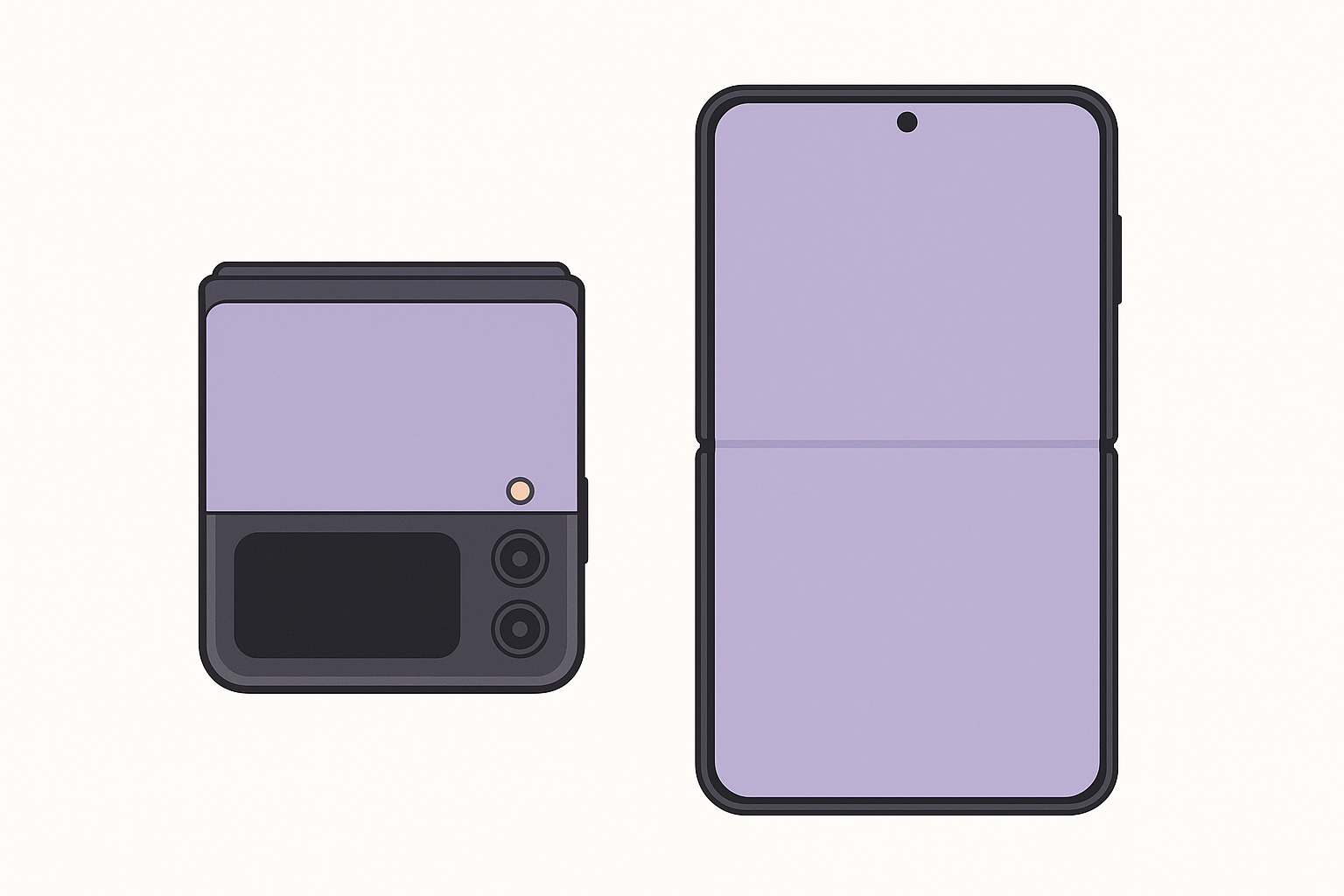
Performance is genuinely flagship-level with the Snapdragon 8 Gen 2 processor. The foldable design enables some cool photography tricks and hands-free video calls using Flex Mode.
Real-world take: Perfect if you want something different and don't mind the trade-offs. Battery life isn't as good as regular phones due to the dual screens and compact design, but the novelty factor and portability make up for it if that's what you're after.
Flagship Performance Leaders ($700-1000)
Here's where Samsung really shows off. These phones have the latest processors, excellent cameras, and premium materials. They're definitely expensive, but if you use your phone heavily or keep phones for several years, the extra performance and features might be worth it.
9. Samsung Galaxy S24
Price Range: $800-850
Best For: Compact flagship that doesn't compromise
The Galaxy S24 proves you can have flagship features in a phone that's actually comfortable to use one-handed. The 6.2" screen is perfect if you find big phones annoying, but you're not giving up performance or camera quality.
The Snapdragon 8 Gen 3 processor is seriously fast – games run smoothly, apps open instantly, and multitasking feels effortless. The AI photography features work well, automatically optimizing shots without you having to think about it.
Real-world take: Great for people who want top performance but prefer smaller phones. Battery life is surprisingly good despite the compact size, and the build quality feels genuinely premium. If you're coming from an older phone, the speed difference will be really noticeable.
10. Samsung Galaxy S24+
Price Range: $900-950
Best For: Larger screen with flagship performance
The Galaxy S24+ is basically the regular S24 with a bigger 6.7" screen and larger battery. Same great performance and cameras, just with more screen real estate and better battery life.
The larger size makes it better for watching videos, gaming, and productivity tasks. The extra battery capacity means you're more likely to get through heavy usage days without needing to charge.
Real-world take: Perfect if you want the S24's performance but prefer larger screens. The extra battery life is noticeable, especially if you're a heavy user. It's not huge like the Ultra, but big enough to make media consumption more enjoyable.
11. Samsung Galaxy S23 (Previous Gen)
Price Range: $700-750 (discounted)
Best For: Proven flagship performance for less
The Galaxy S23 is still an excellent phone, and now it costs significantly less than when it launched. The Snapdragon 8 Gen 2 processor remains fast for everything you'll do, and the camera system produces great results.
Since it's been out for a while, any software issues have been resolved, so you're getting a mature, refined flagship experience.
Real-world take: Smart choice if you want flagship quality but don't need the absolute latest features. The performance difference between this and the S24 isn't huge for most people, but the price difference definitely is. You're getting proven reliability at a better price.
12. Samsung Galaxy S23+ (Previous Gen)
Price Range: $800-850 (discounted)
Best For: Larger flagship experience at reduced price
The Galaxy S23+ gives you the larger screen and better battery life benefits while saving money compared to current models. The 6.6" display is great for media consumption, and the larger battery handles heavy usage well.
Performance remains excellent with the Snapdragon 8 Gen 2, and the mature software optimization means everything runs smoothly.
Real-world take: Excellent value if you want a larger flagship phone but can live without the latest AI features. The combination of big screen, good battery life, and discounted pricing makes it a really solid choice.
Ultra-Premium Powerhouses ($1000+)
Okay, so we're in expensive territory now. These phones are genuinely impressive, but let's be honest – most people don't need to spend this much on a phone. That said, if you're a professional photographer, content creator, or just want the absolute best Samsung offers, these are pretty incredible devices.
Model |
Price Range |
Key Features |
Who Actually Needs This |
|---|---|---|---|
Galaxy S24 Ultra |
$1,200-1,400 |
200MP camera, S Pen, 6.8" screen, titanium build |
Professional photographers, content creators |
Galaxy Z Fold6 |
$1,900-2,100 |
7.6" foldable screen, multitasking, tablet-phone hybrid |
Business executives, productivity obsessives |
Galaxy Z Flip6 |
$1,100-1,200 |
Compact foldable, stylish design, flagship performance |
Fashion-forward users, social media influencers |
Galaxy S23 Ultra |
$1,000-1,100 |
Previous gen Ultra features at lower cost |
People who want Ultra features but not Ultra prices |
13. Samsung Galaxy S24 Ultra
Price Range: $1,200-1,400
Best For: People who actually need the best of everything
The Galaxy S24 Ultra is Samsung's kitchen-sink approach to smartphones. The 6.8" screen is massive, the 200MP camera system is genuinely professional-grade, and the built-in S Pen makes it useful for note-taking and creative work.
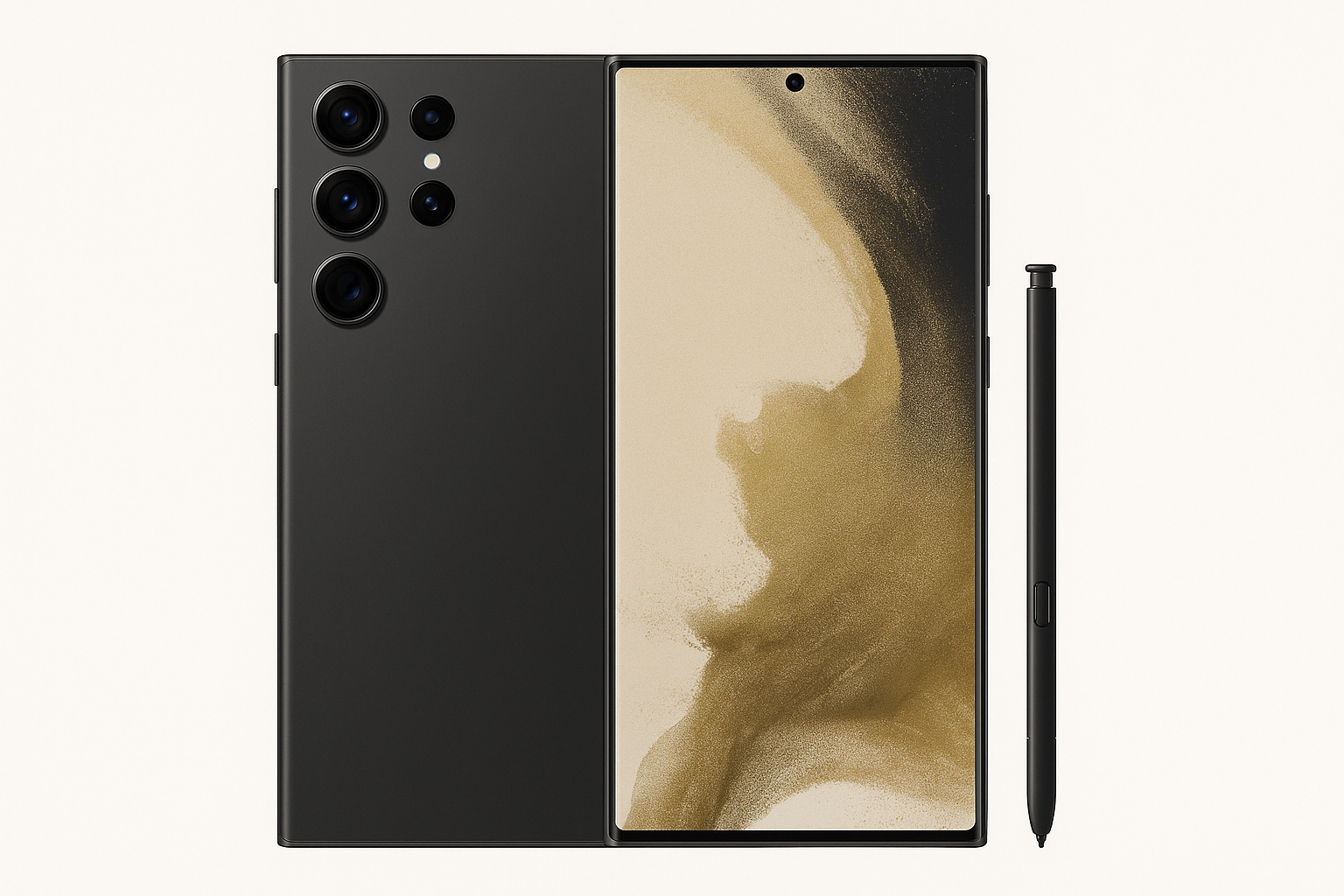
The camera system is where this phone really justifies its price. You can crop photos extensively without losing detail, and the multiple zoom levels actually get used more than you'd expect. The S Pen integration is genuinely useful if you take notes or do creative work.
Real-world take: This is overkill for most people, but if you're a content creator, photographer, or business professional who actually uses these features, it's pretty impressive. The titanium build feels premium, and battery life is surprisingly good considering how powerful everything is. Just be prepared to explain to people why you spent $1,300 on a phone.
14. Samsung Galaxy Z Fold6
Price Range: $1,900-2,100
Best For: Productivity nerds and early adopters
The Galaxy Z Fold6 is basically a tablet that folds into a phone. When unfolded, the 7.6" screen enables true multitasking – you can run multiple apps side by side like on a computer.
When folded, it works like a regular (thick) smartphone. Unfolded, it's genuinely useful for work tasks, presentations, and anything that benefits from a larger screen.
Real-world scenario: My colleague David travels constantly for business consulting. The Z Fold6 lets him run presentations while taking notes and monitoring email simultaneously.
For his workflow, it actually replaced his need to carry a laptop on shorter trips. The tablet-like experience when unfolded makes complex tasks much more manageable, though he admits it's definitely thick when folded and takes some getting used to.
Real-world take: This is for people who genuinely need tablet-like productivity in a phone form factor. It's expensive, it's thick when folded, and the software takes some learning, but if you actually use the multitasking features, it's pretty revolutionary. Most people will find it interesting but not necessary.
15. Samsung Galaxy Z Flip6
Price Range: $1,100-1,200
Best For: Style-conscious users who want something different
The Galaxy Z Flip6 is the fashion-forward foldable. It folds down to a compact square that fits in tiny pockets, then unfolds to a full 6.7" flagship experience. It's definitely a conversation starter.
The improved hinge feels more durable than previous generations, and the cover screen is actually useful for quick tasks without unfolding the phone.
Real-world take: Perfect if you want something unique and don't mind paying extra for the novelty. It's genuinely convenient for small pockets and purses, and the camera improvements make it more practical than previous flip phones. Battery life is decent but not amazing due to the compact design.
16. Samsung Galaxy S23 Ultra (Previous Gen)
Price Range: $1,000-1,100 (discounted)
Best For: Ultra features without current Ultra pricing
The Galaxy S23 Ultra gives you most of the S24 Ultra experience for significantly less money. The 200MP camera system is still excellent, the S Pen works the same way, and performance remains flagship-level.
The main things you're missing are some of the newer AI features and slightly improved cameras, but honestly, most people won't notice the difference.
Real-world take: Smart choice if you want Ultra features but can't justify spending $1,400. The camera is still incredibly good, the S Pen is just as useful, and you're saving $300-400. Unless you absolutely need the latest AI features, this gives you 90% of the experience for significantly less money.
Specialized Use Case Champions
Samsung makes phones for specific situations that regular smartphones can't handle. These aren't for everyone, but if you have particular needs like extreme durability or want a tablet-phone hybrid, these specialized options might be exactly what you're looking for.
17. Samsung Galaxy XCover7
Price Range: $400-500
Best For: Construction workers, outdoor enthusiasts, clumsy people
The Galaxy XCover7 is built to survive whatever you throw at it – literally. It's got military-grade protection, water resistance, and a removable battery, which is pretty rare these days.

The push-to-talk functionality and enhanced durability make it essential for first responders and construction workers. It's not pretty, and the camera isn't amazing, but it'll keep working when other phones would be dead.
Real-world take: If you work in construction, spend a lot of time outdoors, or just destroy phones regularly, this is worth considering. It's not going to win any beauty contests, but it'll survive drops and water that would kill regular phones. The removable battery is actually really convenient if you're away from chargers for long periods.
18. Samsung Galaxy Tab S9 (Phone Mode)
Price Range: $800-1,000
Best For: People who want a tablet that can make calls
The Galaxy Tab S9 with cellular is basically a tablet that can make phone calls. The 11" screen with S Pen support makes it great for creative work and productivity, while still handling phone duties.
It's definitely not pocketable, but if you prioritize screen real estate and creative capabilities over portability, it's an interesting option.
Real-world take: This is pretty niche – you'd need to really value the large screen and S Pen functionality over traditional phone portability. It's great for digital artists or people who do a lot of document work, but most people will find it impractical as their primary phone.
19. Samsung Galaxy A73 5G (Regional)
Price Range: $450-500
Best For: Photography enthusiasts on a budget (where available)
The Galaxy A73 5G focuses on camera capabilities with its 108MP main sensor. It's not available everywhere, but where you can get it, it offers impressive camera performance for the price.
The large 5,000mAh battery supports extended photography sessions, and the 6.7" screen is good for reviewing and editing photos.
Real-world take: If you can find this model and care about camera quality, it's a solid choice. The 108MP sensor captures good detail for social media and casual photography. Just make sure it's actually available in your region and supported by your carrier.
20. Samsung Galaxy M54 5G (Regional)
Price Range: $350-400
Best For: Battery life champions (where available)
The Galaxy M54 5G prioritizes battery life with its massive 6,000mAh battery. If you're a heavy user who needs multi-day battery life, this is designed for you.
The 6.7" screen and 108MP camera add value, but the real selling point is the exceptional battery endurance.
Real-world take: Perfect if battery life is your main concern and you can actually buy this phone in your area. The huge battery really does make a difference for heavy users or people who travel frequently. Just check availability and carrier support before getting excited about it.
Future-Forward 2025 Choices
Samsung's expected 2025 lineup should bring improved AI features, better cameras, and refined foldable technology. These are mostly speculation based on Samsung's patterns, but if you're thinking about waiting for the next generation, here's what we might see.
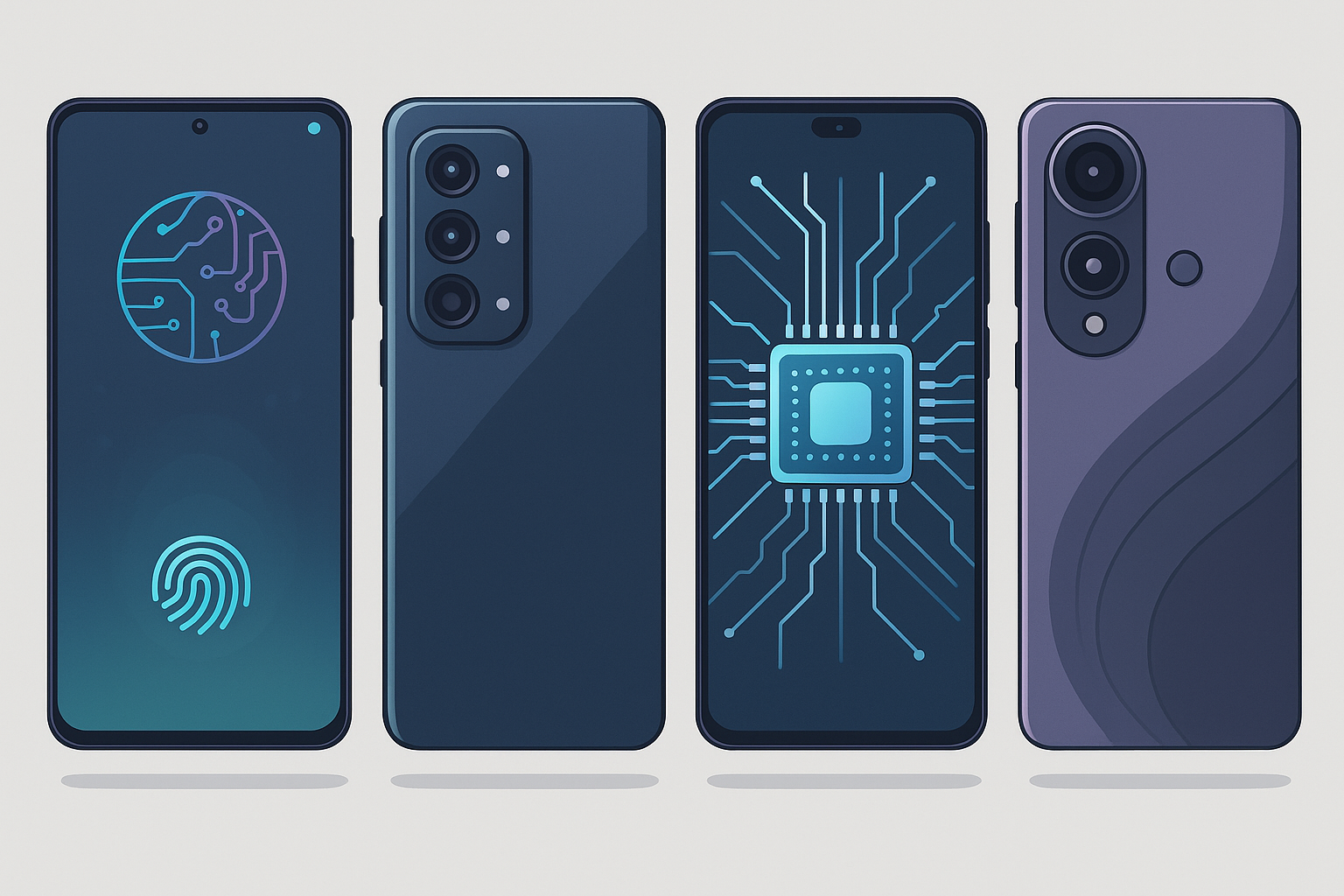
21. Samsung Galaxy S25 (Anticipated)
Expected Price: $850-900
Best For: Early adopters who want the newest tech
The Galaxy S25 should improve on the S24 with better AI features and enhanced camera processing. Expected improvements include better battery efficiency and more refined AI photography features that will define the new samsung phone standard for 2025.
If you're the type who always wants the latest and greatest, the S25 will probably be worth waiting for, though the specific improvements are still speculation.
Real-world take: Worth waiting for if you don't need a phone right now and want the absolute newest technology. The improvements will probably be incremental rather than revolutionary, but early adopters always want the latest features.
22. Samsung Galaxy S25+ (Anticipated)
Expected Price: $950-1,000
Best For: Larger screen with newest features
The Galaxy S25+ should expand on the S25 experience with a bigger display and better battery life. Expected improvements include enhanced AI features and better heat management during intensive tasks.
The larger form factor should enable better performance and battery life, making it appealing to users who want the latest technology with enhanced usability.
Real-world take: If you prefer larger phones and can wait, this might offer the best balance of new features and practical improvements. The expected pricing puts it in competitive territory with other flagship options.
23. Samsung Galaxy S25 Ultra (Anticipated)
Expected Price: $1,300-1,500
Best For: Ultimate power users who need cutting-edge everything
The Galaxy S25 Ultra should be Samsung's showcase device with enhanced S Pen features, improved camera capabilities, and whatever new AI tricks they're working on. Expected improvements include better integration between the S Pen and AI features.
This will probably continue serving professionals and content creators who need the absolute best, though the improvements over the S24 Ultra might not justify the upgrade for most people.
Real-world take: If you're a professional who relies on the Ultra's features and always needs the latest, it'll probably be worth waiting for. For everyone else, the S24 Ultra will likely remain excellent for years to come.
24. Samsung Galaxy Z Fold7 (Anticipated)
Expected Price: $2,000-2,200
Best For: Foldable enthusiasts with deep pockets
The Galaxy Z Fold7 should improve on foldable technology with better durability, enhanced multitasking, and hopefully a less noticeable crease. Expected refinements include better hinge mechanisms and improved software optimization.
The foldable form factor should continue getting more practical while addressing current limitations through improved engineering.
Real-world take: If you're interested in foldables but want to wait for the technology to mature more, this might be worth holding out for. The improvements will probably be incremental but meaningful for daily usability.
25. Samsung Galaxy Z Flip7 (Anticipated)
Expected Price: $1,200-1,300
Best For: Style-conscious users who want refined foldable tech
The Galaxy Z Flip7 should refine the flip design with better durability, improved cameras, and enhanced cover screen functionality. Expected improvements include better battery life and more useful cover screen features.
The unique form factor should continue appealing to fashion-forward users while becoming more practical through improved engineering.
Real-world take: If you like the flip concept but want a more refined version, waiting might be smart. The improvements will probably focus on addressing current limitations while maintaining the style appeal.
Performance Deep Dive: How Each Phone Handles Real-World Scenarios
Let's be honest about how these phones actually perform in different situations. Budget models handle basic stuff fine but struggle with demanding tasks, mid-range options cover most people's needs well, flagship models excel at everything, and specialized devices address specific requirements.
Use Case |
Budget Models |
Mid-Range Models |
Flagship Models |
Ultra-Premium Models |
|---|---|---|---|---|
Social Media |
Works fine |
Works great |
Smooth and fast |
Overkill but perfect |
Photography |
Decent in good light |
Pretty good overall |
Really good |
Professional quality |
Gaming |
Casual games only |
Most games fine |
Everything runs smooth |
Maxed settings, no issues |
Productivity |
Basic tasks only |
Handles most work |
Great for business |
Laptop replacement level |
Battery Life |
All day with normal use |
All day, heavy use |
All day, any use |
All day plus some |
Multitasking |
Gets slow quickly |
Handles several apps |
Smooth switching |
True multitasking |
Budget Galaxy A series phones (A15-A35) handle everyday smartphone tasks without major issues. Instagram, texting, and casual photography work fine, though demanding games might stutter and heavy multitasking can slow things down. The 5,000mAh batteries consistently provide all-day usage for typical use patterns.
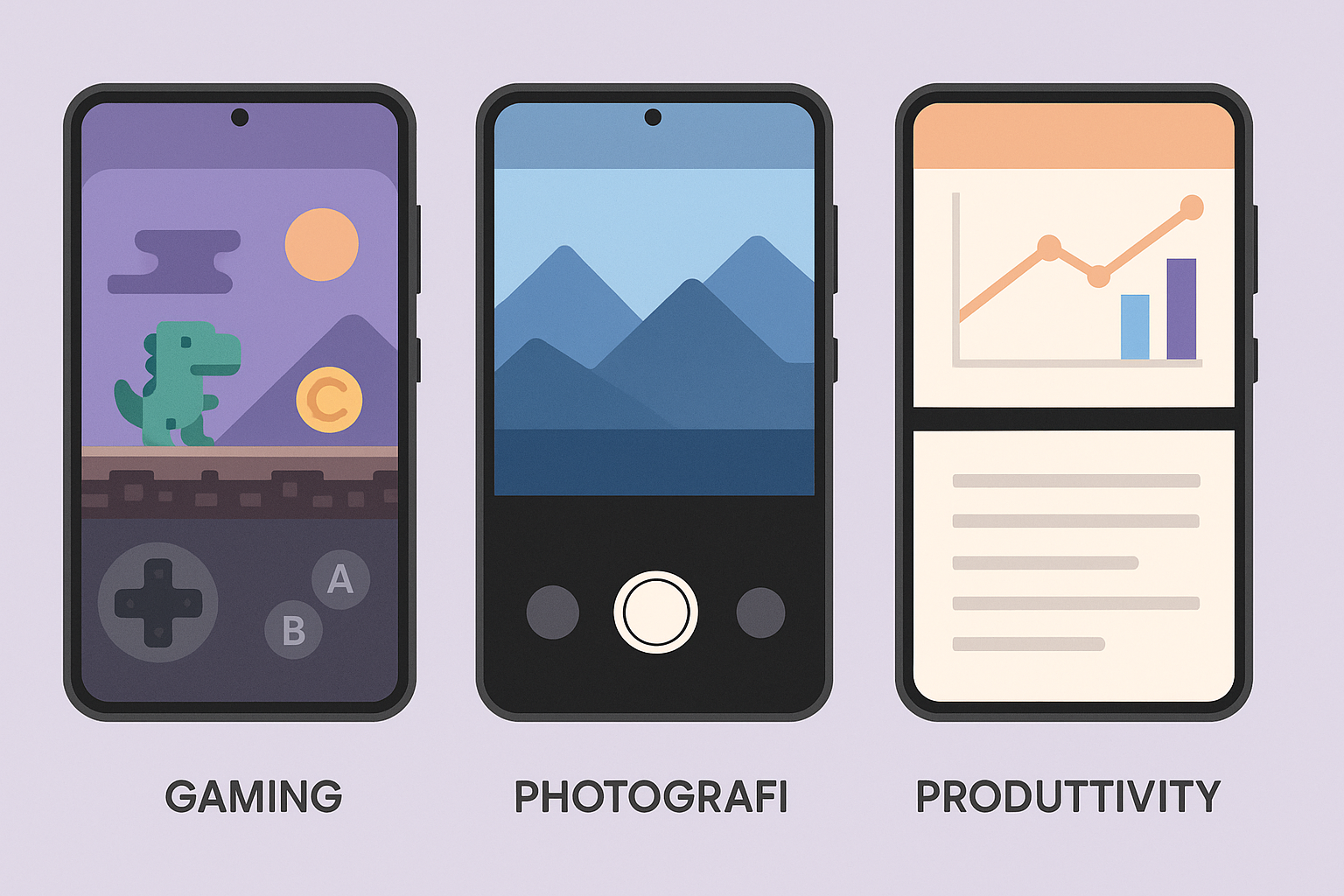
Mid-range champions (A55, S23 FE, S24 FE, Z Flip5) hit the sweet spot for most people. Gaming performance is solid for most titles, cameras produce consistently good results, and multitasking feels smooth. The 120Hz displays make everything feel more responsive than budget options.
Flagship performance leaders (S24 series, S23 series) excel at pretty much everything. Gaming runs smoothly on high settings, cameras capture professional-quality content, and multitasking never feels sluggish. The latest AI features enhance photography and productivity automatically.
Ultra-premium powerhouses (S24 Ultra, Z Fold6, Z Flip6, S23 Ultra) are honestly overkill for most people, but they handle absolutely anything you throw at them. Professional photography, intensive gaming, complex productivity workflows – everything runs flawlessly.
Camera performance varies significantly across the lineup. Budget models take decent photos for social media but struggle in challenging lighting. Mid-range options deliver consistently good results with AI helping out. Flagship models provide professional-grade capabilities, and Ultra models enable true professional photography.
Battery life stays consistently good across Samsung's range. Most models pack 5,000mAh batteries that easily handle all-day usage. Larger screens and powerful processors in flagships might reduce endurance slightly, but AI optimization helps maintain practical all-day performance.
Gaming performance scales with the processor. Budget models handle casual games fine but struggle with demanding titles. Mid-range options run most games well with good frame rates, while flagship models deliver smooth gaming on maximum settings.
Productivity capabilities vary dramatically. Basic models handle essential communication fine, mid-range options support moderate work tasks, flagship models enable professional workflows, and specialized devices like the Z Fold6 genuinely revolutionize mobile productivity.
Protecting Your Samsung Investment
After spending anywhere from $200 to $2,100 on a Samsung phone, protecting it becomes pretty important. Screen replacements cost a fortune, and even minor drops can cause expensive damage that affects both performance and resale value.
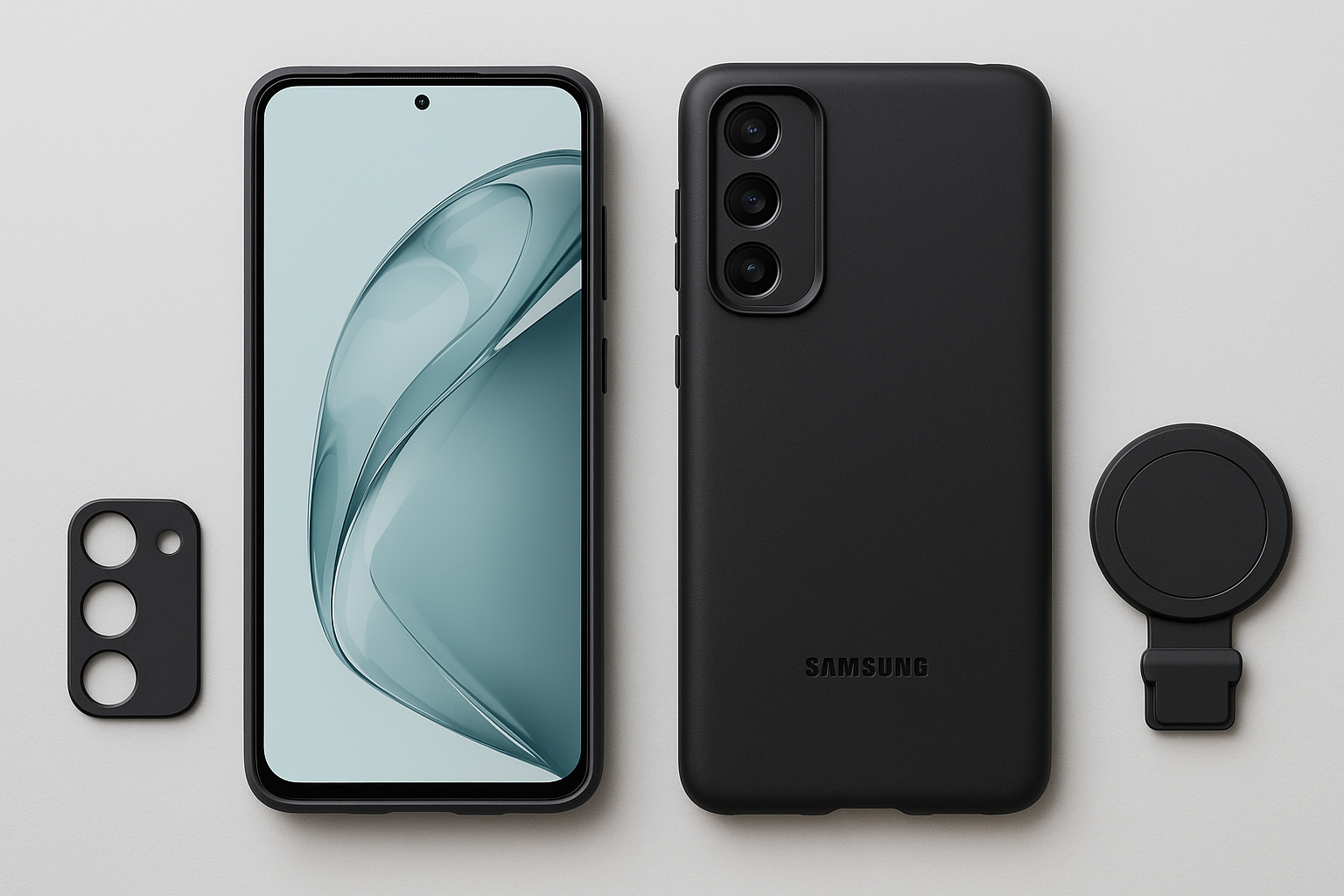
Your Samsung phone represents a significant investment, whether you went budget-friendly or splurged on the flagship. Screen replacement costs often exceed $300, and even small drops can cause internal damage that's expensive to fix and hurts resale value.
This is where Rokform's military-grade protection becomes really valuable. Their cases provide 6-foot drop protection from all angles using premium materials that actually absorb impact energy effectively.
Rokform's Samsung-specific cases feature strong N52 Neodymium magnets that provide 2-3x stronger magnetic grip than cheaper alternatives, enabling secure mounting for cars, bikes, and workstations. The RokLock™ twist-lock system ensures your Samsung stays securely mounted during demanding activities.
The slim design doesn't add unnecessary bulk while maintaining full access to your Samsung's features. Wireless charging works perfectly, camera access stays unobstructed, and all ports remain easily accessible.
Whether you chose the Galaxy S24 Ultra for professional photography or the Z Fold6 for productivity, Rokform cases enhance your phone's capabilities rather than limiting them. Magnetic mounting systems work great for content creators using Samsung's advanced cameras, while secure vehicle mounting enables safe navigation and hands-free calling.
For people using rugged Samsung models like the XCover series, Rokform's protection provides additional security in challenging environments. The combination of Samsung's technology and Rokform's protective engineering ensures your device performs when you need it most.
Ready to protect your Samsung investment? Check out Rokform's Samsung-compatible cases and mounting solutions to make sure your carefully chosen device can handle whatever your lifestyle throws at it.
Final Thoughts
Honestly, most people overthink this whole phone buying thing. Samsung makes solid phones across their entire lineup – you're not going to go wrong with any of these picks, though some definitely make more sense than others depending on your situation.
Budget options like the Galaxy A35 5G prove you don't need to spend a fortune to get a good smartphone experience. Mid-range phones like the S24 FE hit the sweet spot for most people, giving you premium features without the premium price tag that makes your wallet cry.
Flagship models are impressive and all, but unless you're doing something specific that needs all that power – like professional photography or intensive mobile gaming – you're probably just paying for bragging rights. The S24 Ultra's 200MP camera is genuinely professional-grade, but let's be real, most people will use it to take pictures of their lunch.
The foldables are cool technology, but they're definitely not necessary for most people. If you're genuinely excited about the unique form factor and can afford the premium pricing, go for it. Just don't convince yourself you need a $2,000 phone for basic smartphone tasks.
Here's my honest take: if you're coming from an older phone, even Samsung's "budget" options will feel like a huge upgrade. The mid-range phones are where the real value lives – you get most of the good stuff without the premium pricing. And the flagship phones? They're impressive, but unless you're doing something that actually needs all that power, you're mostly paying extra for features you won't use.
The key is matching your phone choice to your actual usage patterns, not what you think you might do someday. A Galaxy A55 5G handles most people's needs perfectly well, while the S24 Ultra becomes essential only if you actually need professional-grade cameras or S Pen functionality for work.
At the end of the day, pick something that fits your budget and doesn't stress you out about the monthly payment. Samsung makes solid phones across the board, so focus on getting something that makes sense for your actual needs. And maybe get a good case, because I've seen way too many people crack their screens in the first week and spend the next two years looking at spider web patterns every time they use their phone.

